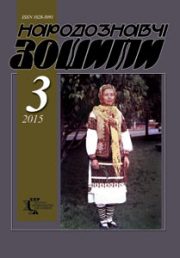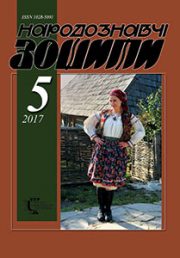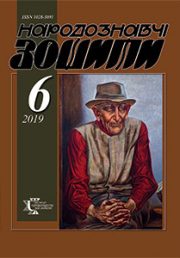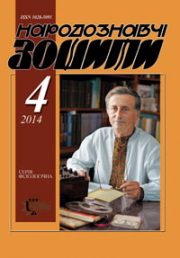The Ethnology Notebooks. 2020. № 1 (151), 21—26
UDK7.04(477):37.026″XVI-XVII”
К 59
DOI https://doi.org/10.15407/nz2020.01.021
KOZINCHUK Vitaliі
ORCID ID: https://orcid.org/0000-0002-8518-5686
Doctor of Philosophy (PhD)
Member of the National Union of Artists of Ukraine
Assistant professor at the Department of Theology at Ivan Zolotousty Academy
Senior Researcher at Carpathian Art Museum
Doctoral student of the Vasyl Stefanyk Precarpathian National University,
57, Shevchenko st., 76000, Ivano-Frankivsk, Ukraine,
Contacts: e-mail: br_vitalik@bigmir.net
Abstract. In today’s culture a study of Ukrainian baroque style icons is very relevant. The purpose of this scientific research is to study the pedagogical aspects in Ukrainian baroque iconography in the XVII—XVIII centuries. Object of study is the Ukrainian canonical baroque iconography of cultural art, the subject — is the reflection in the cultural works of art that have didactical and pedagogical properties. Methodological basis of this research is based on principles of objectivity and historical sacral art. The methodology of this research is to engage in fundamental principles of systemic art analysis. The article uses the methodological principles of domestic and foreign art critics (V. Ovsiichuk, D. Stepovyk, A. Zhaboriuk, N. Vysotskaia etc.). For the formation of the source base, an analysis of basic art studies covering the field of interest and the review by the author of Baroque works of the collections that are in the Museum of Art of Prykarpattya and other museum-type establishments was carried out. The basis of the work is the authors own observation with references to other authoritative sources.
The article takes a deeper look at the Ukrainian Baroque style in iconography (ХVII—XVIII centuries). The author analyzed the evolution of the iconographic canon and the emergence of new compositional variants that have pedagogical (didactic) function, which gives an opportunity to express and interpret iconography as «theology in paint». It is determined that Baroque iconography provides a Christian upbringing of a religious person. The topic of Christian pedagogy in icons on the verge of ХVII—XVIII art is new. In the academic circles, this topic is not sufficiently covered and requires more detailed research.
Keywords: icon, art, pedagogy, didactics, culture, style, canon, Renaissance, Baroque, iconography.
Received 3.01.2020
REFERENCES
Zhaboriuk, A.A. (2015). Baroko: Age, person, style, art world. Odesa: Astroprint [in Ukrainian].
Ovsiichuk, V. (1991). Masters of Ukrainian baroque. Kyiv: Naukova dumka [in Ukrainian].
Vysotskaia, N.F. (1995). Iconography of Belarus XV—XVIII. Mynsk: Mynsk; Belarus [in Belarusian].
Zholtovchkyi, P. (1982). Drawings of Keivo-Lavra iconography worshop: Album-catalog. Kyiv: Naukova dumka [in Ukrainian].
Stepovyk, D.V. (2013). New ukrainian icon XX and beginning of XXV centuries: Traditional iconography and new style. Lviv: Misioner [in Ukrainian].
Shpak, O. (2006). Ukrainian folk engraving XVIII—XIX centuries. Lviv: Institute of Ethnic studies NAN [in Ukrainian].







